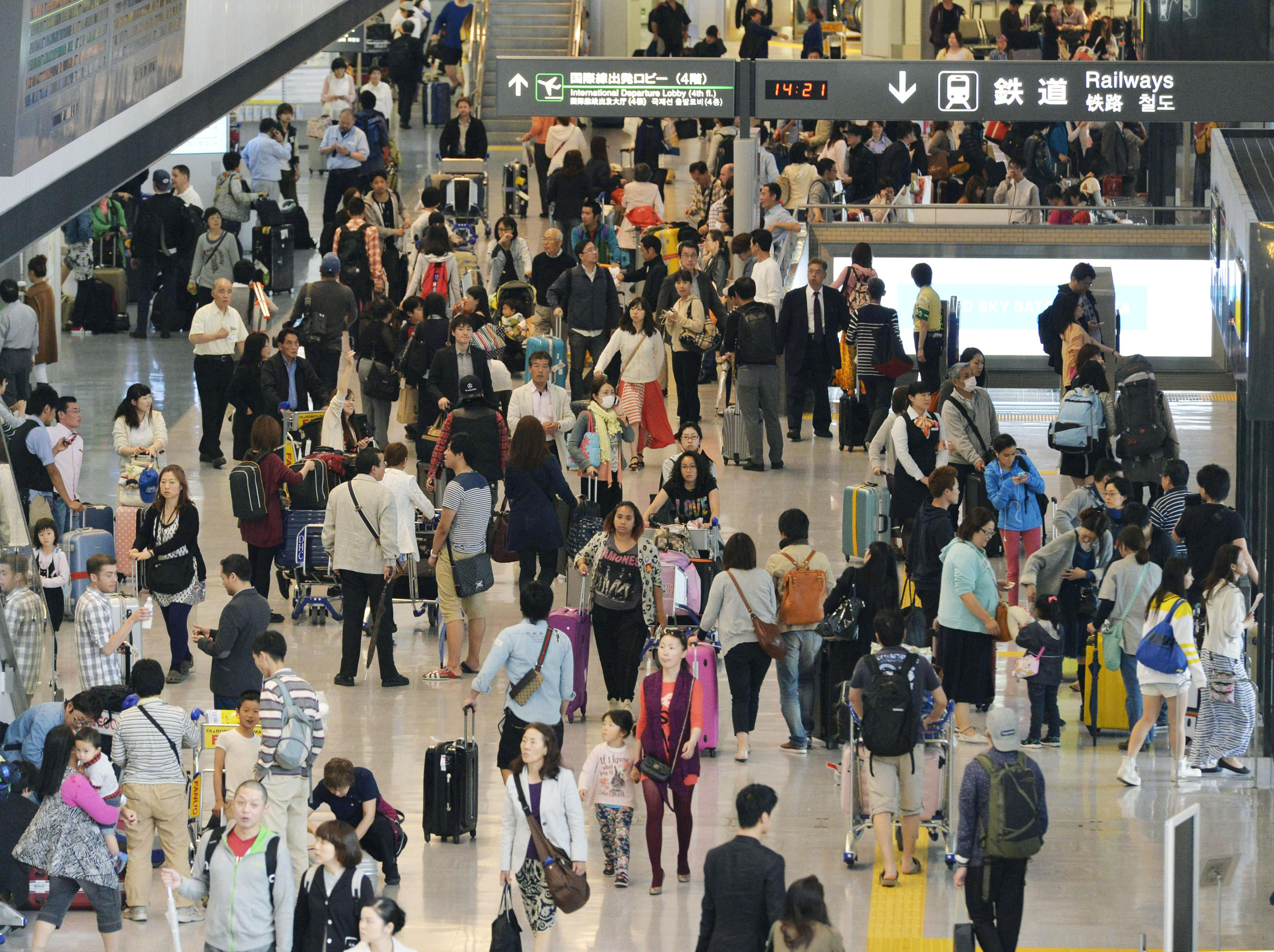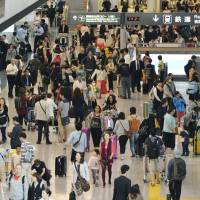Facial recognition machines may be introduced for immigration screening of Japanese passengers at airports as soon as fiscal 2017 to reduce waiting time amid a growth in foreign visitors, according to Justice Ministry sources.
The switch will allow more passport control staff to be shifted to foreign passengers, the sources said.
A ministry panel of experts presented a report to Justice Minister Yoko Kamikawa that says identity recognition technology has improved sufficiently to make full use of it.
In trials this summer involving 22,341 volunteers aged 13 and older, the rate of passengers not correctly identified dropped to as low as 0.26 percent for the best of the machines tested, the ministry. said. The trials were conducted at Narita International Airport and Haneda airport.
In a 2012 trial, a machine made by one of the five companies produced an error rate of 17 percent, high enough to discourage the ministry. The latest trials were held as the ministry expects more people to visit Japan ahead of the 2020 Tokyo Olympics.
Biometric recognition machines compare images of arriving passengers' faces with facial photo data encrypted in chips in their passports.
Failed identity matches during the tests resulted from people wearing glasses or when hair overlapped their eyebrows, according to an immigration official.
The government introduced automated passport control gates in 2007 for Japanese passport holders and some foreigners living here. They allow passengers to bypass manned passport control counters and go through fingerprint-based machine checks.
Now available at four international airports for Tokyo, Nagoya and Osaka, they require fingerprint registration in advance and the number of users has not been growing.




